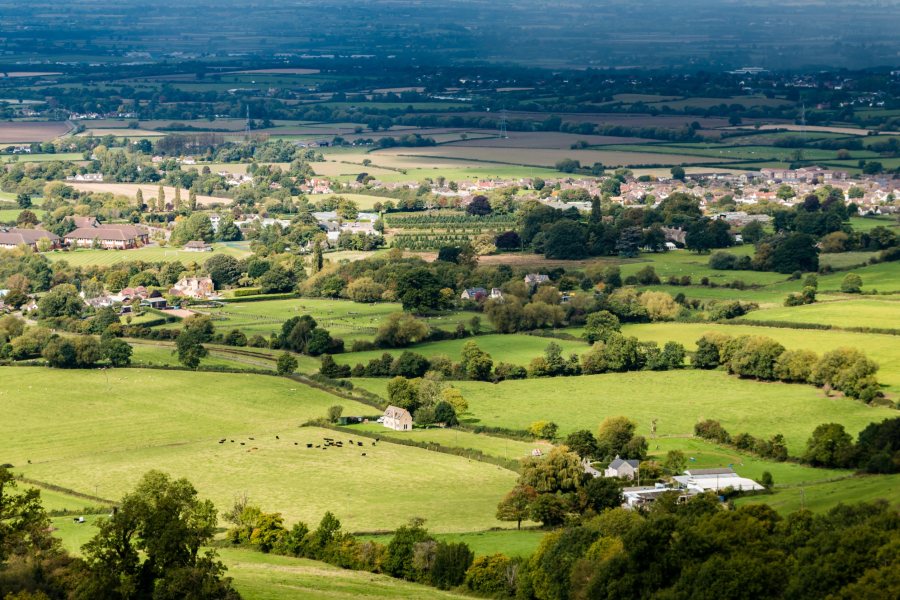
Following hard on the heels of the ELM update, Defra have launched the first revision of the 25-year Environment Improvement Plan 2023.
First published five years ago, this 262-page document clarifies what funding is available for the agricultural sector to forge a sustainable future, but is there anything new for forestry?
In this article, H&H Land & Estates forestry manager, Sarah Radcliffe, summarises the key points.
The Environment Improvement Plan (EIP) 2023 outlines 10 goals. Woodlands have been mentioned in 4 of these goals including thriving plants and wildlife, clean and plentiful water, enhancing biosecurity and enhancing beauty, heritage and engagement with the natural environment.
The main woodland target is to increase tree canopy and woodland cover to 16.5% of total land area by 2050. This target will deliver an increase in tree cover of around 250,000 ha, equivalent to an area the size of Cheshire.
There is a further interim target to increase tree canopy and woodland cover by 0.26% of land area (equivalent to 34,000 hectares) by 31 January 2028.
In 2021 the Forestry Commission published the England Tree Action Plan which provides a strategic framework for woodland creation and woodland management ambitions and is supported by the £750 million Nature for Climate Fund (NCF).
As part of this Defra has already launched the England Woodland Creation Offer (EWCO) and it is continuing to support woodland management through the Countryside Stewardship Higher Tier scheme.
To assist with this the Forestry Commission has in the last year published evidence-based decision support frameworks to guide both landowners and public bodies regarding tree planting decisions in peat environments or in locations where there may be ground-nesting birds.
Going forwards there appear to be plans to publish a revised Tree Health Resilience Strategy, a Deer Management Strategy and a Grey Squirrel Action Plan.
The Nature for Climate Fund which is currently funding EWCO will end in 2025, after which new farming schemes will deliver a large proportion of tree planting funding.
The new farming schemes will support land managers to establish new woodland systems, expand existing ones and manage woodlands sustainably. Future woodland creation grants will mirror EWCO ensuring continuity of offer.
Landscape Recovery will support major landscape-scale afforestation projects where these deliver a wide range of environmental outcomes.
Other ambitions set out in the EIP include: Exploring the inclusion of greenhouse gas removals in the UK Emissions Trading Scheme, and working with the forestry sector to increase the amount of productive forestry in England.
It also includes developing a voluntary Woodland Water Code so landowners are incentivised by natural capital markets to plant woodlands in places where they do most to improve water quality.
Agroforestry is specifically mentioned with an aim to encourage agroforestry planting in 10% of all arable land in England by 2050.
This will include an agroforestry standard, further options available in countryside stewardship, and a further test and trail project.
Grey squirrel control is also specifically mentioned. Since 2014 there has been funding to manage grey squirrel populations in specific red squirrel reserves.
This funding dropped off in the early years of Countryside Stewardship but has now been reintroduced to help landowners manage grey squirrel populations.
Woodland has also been specifically mentioned as providing mental health benefits. Countryside Stewardship and EWCO have additional payments to provide more public access.
The tree canopy/woodland increase target of 34,000ha by 2028 is still steep, due to the difficulty in getting planting applications though the rigorous regulations and barriers caused by conflict of interest stemming from Natural England’s need to meet their habitat restoration/preservation targets.
Until Defra decides which is more important there is always going to be competition as to whose habitat is more important and will deliver the higher biodiversity gain.
The EIP 2023 does briefly mention the need to review regulation, and everyone would welcome a less arduous journey through the grant and EIA process.
The 2023 Plan does not set out anything new from the woodland aspect, but it does increase the importance of preventing degradation, improving habitats and biodiversity.
It recognises that we still need to produce food but it also highlights the need to create and improve the habitats we already have, as well as making space for woodland.
The updated Plan mentions planting high quality native and mixed woodland as well as working with the forestry sector to increase the amount of productive forestry in England.
The current grants do not incentivise the planting of productive conifer plantations, which is what we need to help bridge the gap between home grown and imported timber.
It is great news that grey squirrels and access have been specifically mentioned and that extra payments are now available for new planting and existing woodland management.
The mention of agroforestry is welcome as more trees on farms is where the least resistance from other biodiversity priorities lie.
It will be interesting to see what the next 5 years bring, especially with the NFC funding transitioning into the new farming schemes in 2025, and if there are more incentives to plant commercial woodland and integrate agroforestry into the current farming systems.
